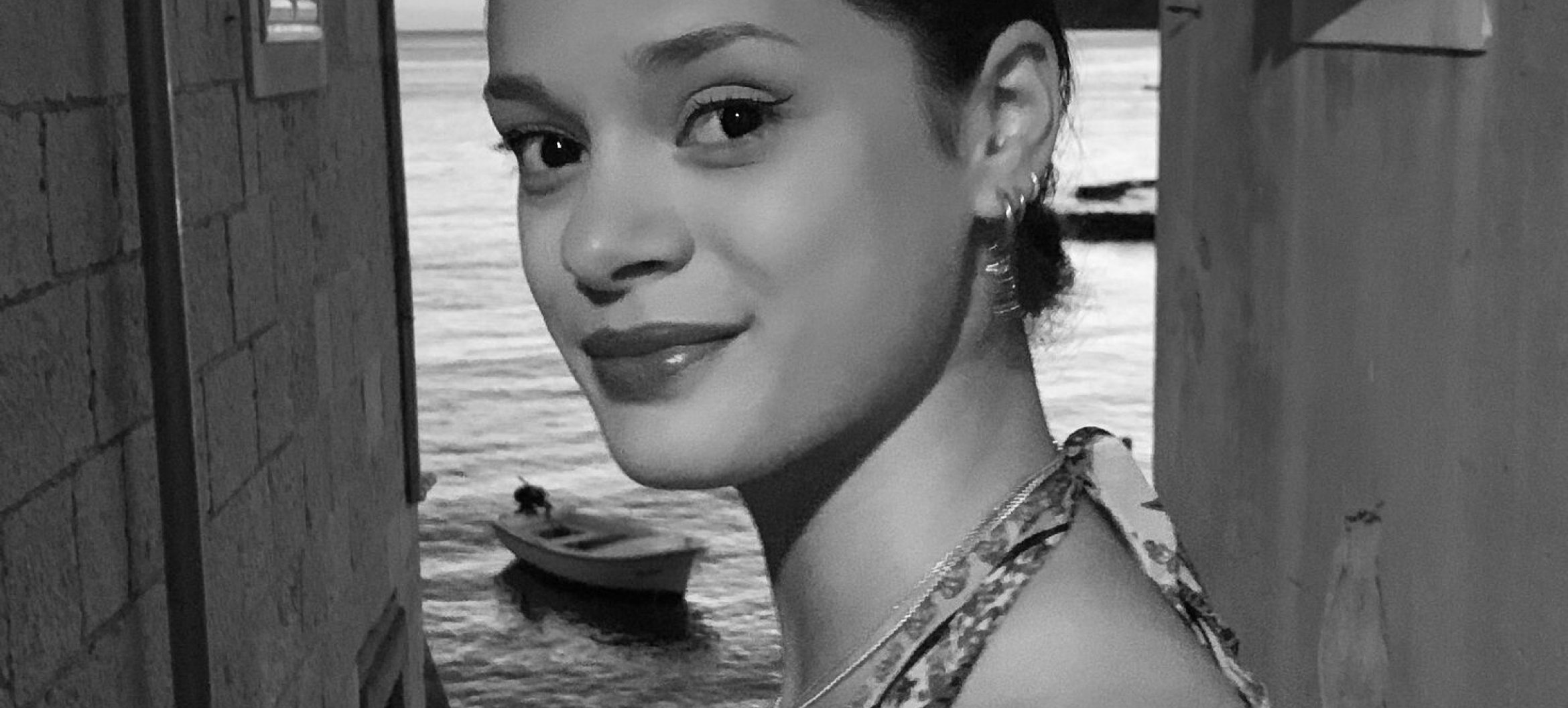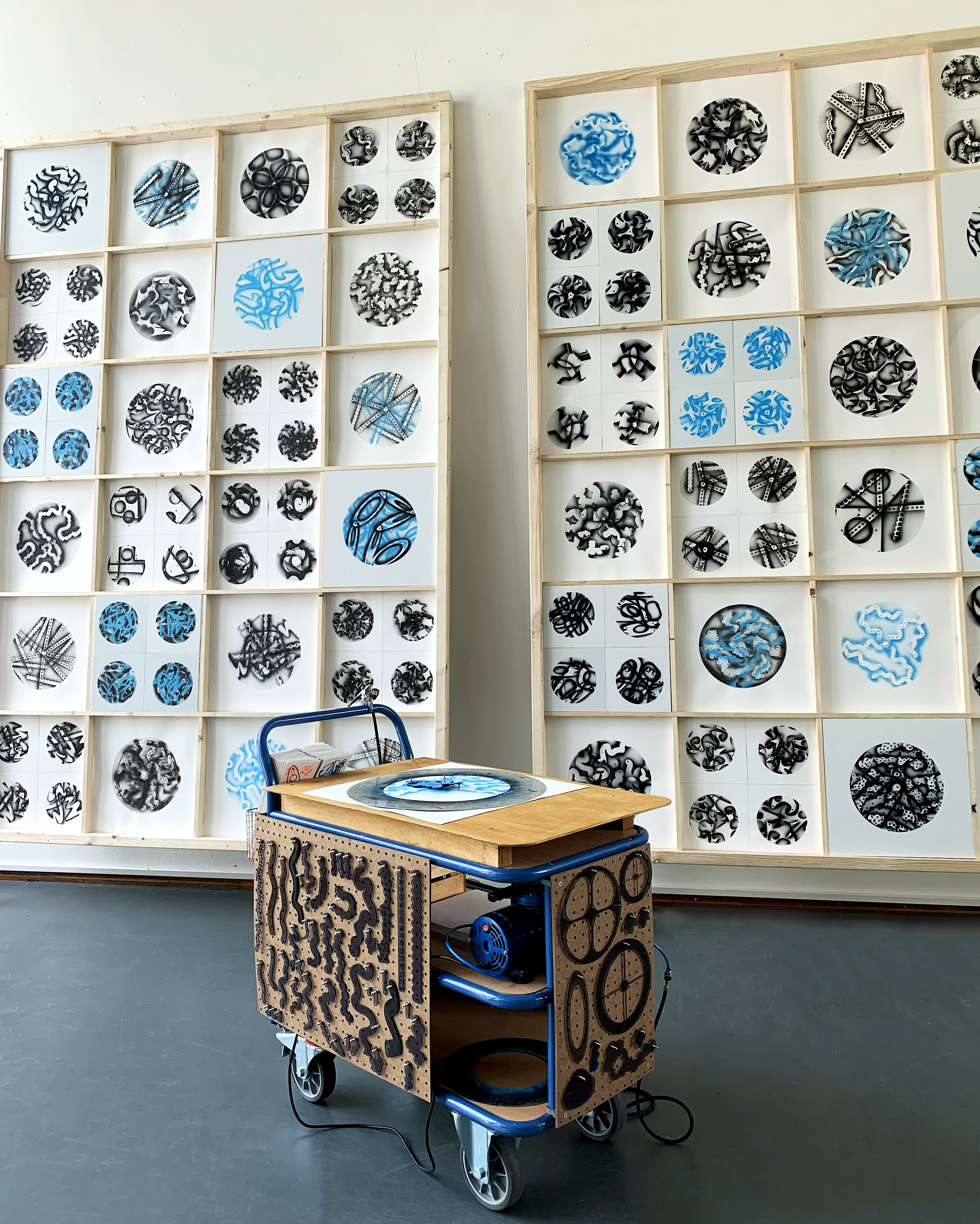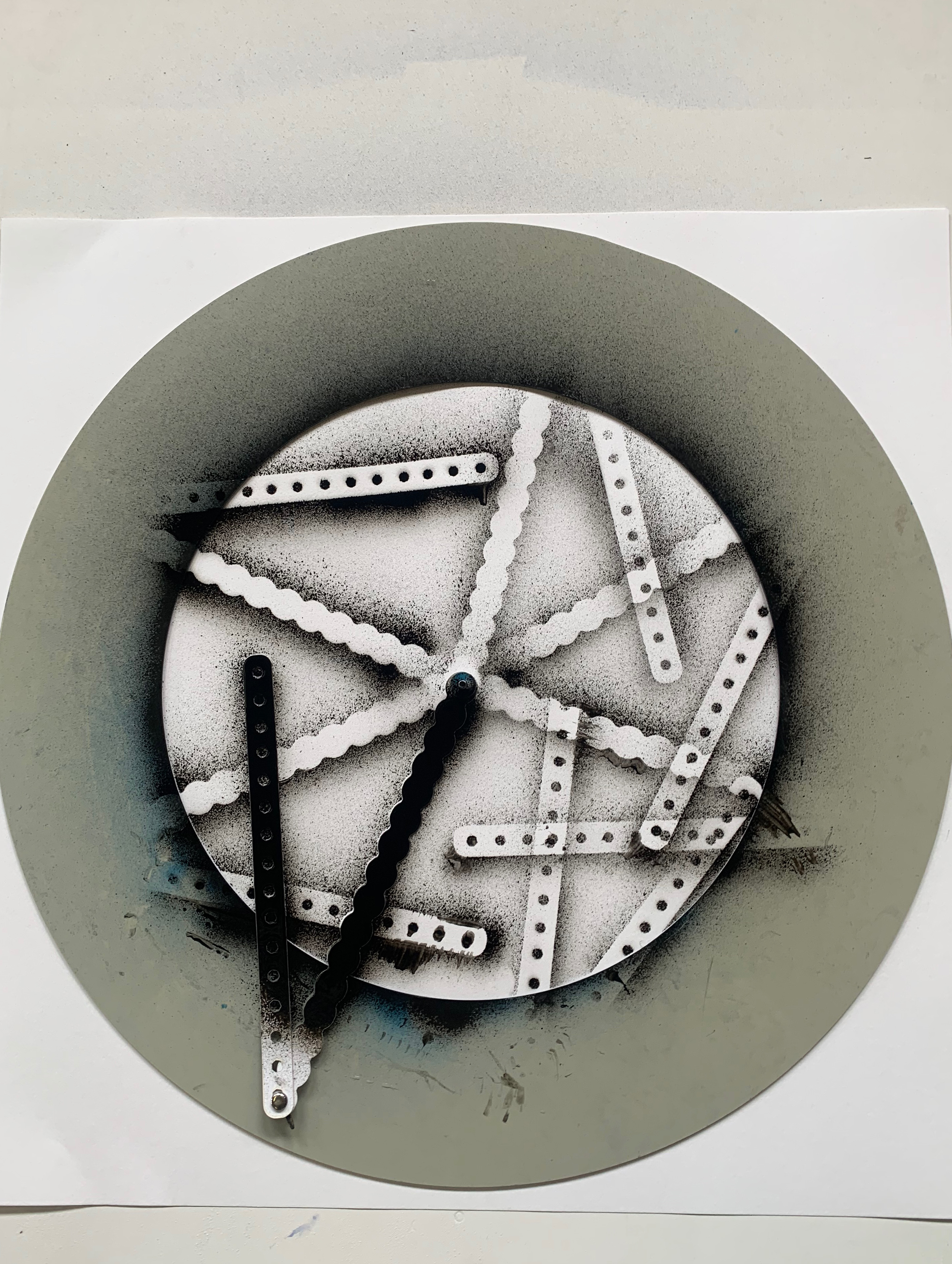Helena Hesselink: "At ArtEZ, I found the support and guidance I needed."
With physical art as a starting point, Helena Hesselink presents a truly original finals project. The fourth-year student of Graphic Design in Arnhem devised an alternative method for creating airbrush prints. "If you're good at something, go for it and don't let anything hold you back," she advises.

You might know them, those little paint guns that allow you to apply paint, with the help of a compressor, very detailed and evenly on both large and small surfaces, the so-called air brush tool. It was not necessarily the common style of air brush that Helena was interested in, it was more the operation and technique of this tool that she took as the starting point for her 'Major Research Project'. She developed an alternative method of producing graphic prints with this tool. Without knowing it beforehand, she uses the mathematical double pendulum method.
"I can never predict exactly how the print will turn out."
Helena: "Many artists working with an air brush use foils and stencils to create clean lines. For me, the challenge was more in creating my own diversity of stencils. I experimented by connecting them together with a hinge to create random compositions with paint & air brush on paper. This produced interesting but disorganised images for me. I was looking for more structure within the randomness of the images and came up with the use of a round mould, this gives a unity, everything within it is allowed to be random and chaotic."

To allow both control and randomness to play together in the result, she attaches the stencils to the motor of a disco ball that keeps spinning constantly. "By using various stencils with different shapes and speeds of movement and because of the movement, the pressure of my hand and the variable airflow of the air brush, the outcome of image is always different," Helena explains. During the process, she finds that her method visually shows how a mathematical double pendulum works. "That is a circle with two pendulums in the middle, which are also connected and move like a pivot. But in which way that happens makes the result unpredictable." Using her method, Helena creates air brush prints that are all different from each other. "By capturing different variables as accurately as possible in a system, I want to discover how the visual results of this system change when you adjust certain aspects. This research is also a way of showing that physically experimenting with materials can bring you a lot in a design process," Helena states.
Physical experimentation
Graphic Design at ArtEZ was not her first choice for her study graphic design. This was mainly due to the fact that Helena wanted to 'escape' her hometown Arnhem for a while. "After a year I came back already," she laughs. "I was still quite young and at ArtEZ I found the support and grip I needed. During my studies, doors were also opened that I didn't know existed, so I certainly don't regret my decision to stay in Arnhem." What she found to be a plus in her studies? The freedom you get to determine your own direction. "You are very much encouraged at the course to discover what you are good at. For example, I don't like making videos at all, but I'm glad I now know how to do it. In the third year, I really found out that I prefer making physical work to digital."

Back to basic
For Helena, it did not stop at just studying. So, in between, instead of an internship, she attended an exchange programme at Luca School of Arts, Textile Design in Ghent (Belgium). "During covid, I felt quite confined and I very much missed the physical, that I could just put my work on the table. During that time, I also started knitting and was doing a lot with textiles anyway. The School of Arts in Ghent was a great way to dive into something else besides graphics. Besides being good for your social network, I also found it very cool to learn all kinds of things about traditional techniques. Really back to basics for a while." What she learned there, above all, is to experiment and not get disappointed if something doesn't work right away. "And not being afraid to try things, which I also took into account in my graduation research."
The strength of the art academy is being surrounded by people who all share the same interests.”
Another thing that demanded a lot of her time during her years at ArtEZ was Typeclub 530, a typography collective of fellow students that runs almost weekly workshops experimenting with making (experimental) letters. "Also very material-oriented," Helena says. "Anyone can basically make letters and by organising it after class time without teachers, the threshold is lower and we even get ArtEZ wide interest."
Stay close to yourself
As Helena nears completion of her bachelor's degree in Graphic Design, her future plans are taking shape. "I hope to start earning a living as a freelance designer soon. Or maybe I will still apply somewhere as an intern, since I did not choose an internship during my studies." She also wants to further expand her portfolio and create art without necessarily having a commission attached. Helena: "I will definitely miss ArtEZ. The strength of the art academy is that you are surrounded by people who all share the same interests. You inspire each other and learn new things because everyone does something different. Yet it is also important to stay close to yourself and do what you like. In other words: don't let that stop you and go for it."


